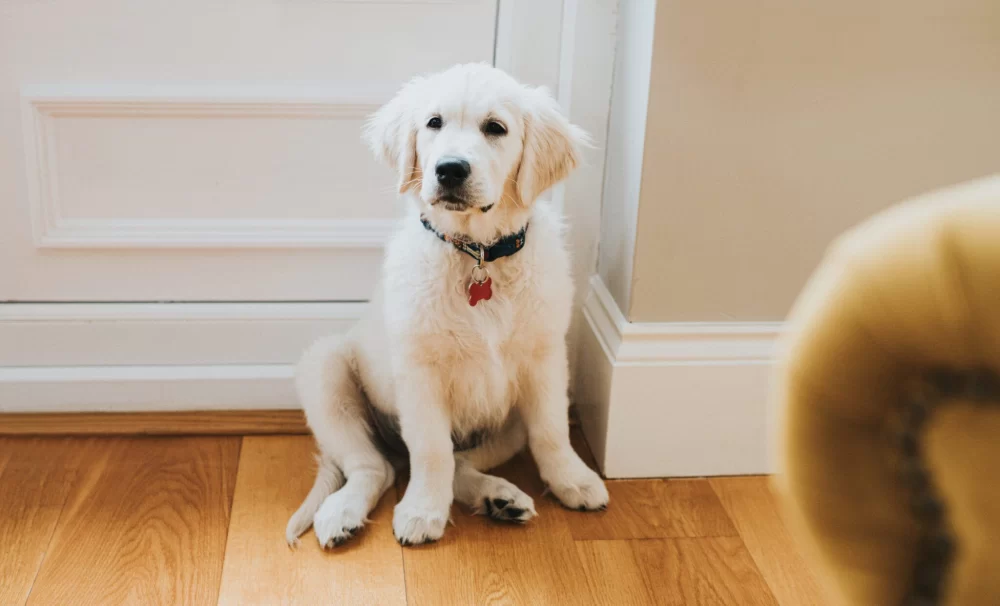Start Your Puppy’s Potty Training Journey the Right Way
When I first brought my adorable puppy home, I was filled with excitement. But like most first-time dog owners, I quickly realized that potty training was not going to be a walk in the park. I wasn’t sure where to start or how to tackle the messes around the house, and I had no idea what techniques worked best for my furry friend. If you're in the same boat, don't worry—I've been there, and I’m here to share some essential puppy potty training tips for beginners that will help you succeed with your new puppy!
1. Understanding the Basics of Potty Training
Potty training is one of the first things you’ll need to teach your puppy, and it’s essential to start as soon as you bring them home. The key is consistency, patience, and positive reinforcement. Puppies have small bladders, and they need frequent potty breaks—typically every 2-3 hours for young puppies. Make sure you are prepared to guide them to the right place at the right time, so they start associating the outdoors with potty time.
2. Set Up a Designated Potty Area
Creating a consistent potty spot for your puppy is a great way to make training easier. Pick a location outside where you’ll take your puppy every time they need to go. I found that taking my puppy to the same spot every time helped him understand where he was supposed to go. Over time, he would run to that spot as soon as I opened the door—talk about a success! The key is repetition. Dogs thrive on routine, so choose a spot and stick with it.
3. Establish a Regular Potty Schedule
Setting a regular potty schedule is vital for your puppy’s training success. Puppies typically need to go outside first thing in the morning, after meals, after naps, and before bed. If you keep a consistent schedule, your puppy will soon learn the timing and cues associated with potty breaks. When I started taking my puppy out at the same times every day, I noticed fewer accidents inside the house. Soon enough, he started to anticipate the breaks and would even head for the door on his own!
4. Positive Reinforcement Is Key
Positive reinforcement works wonders when potty training a puppy. Each time your puppy goes potty in the right spot, praise them with enthusiastic words like "good boy" or "good girl" and offer them a treat. The reward system helped me get my puppy to associate going potty outside with something positive. Puppies love attention and treats, so make sure to reward them right after they do their business outside.
5. Keep an Eye on Signs That They Need to Go
Being observant of your puppy’s behavior can save you from accidents. Puppies will often show signs that they need to go potty, like sniffing the ground, circling, whining, or standing by the door. I learned to recognize my puppy’s potty signals early on, which helped prevent accidents inside the house. If you catch your puppy in the act of needing to go, gently guide them to their potty spot and praise them once they do their business outside.
6. Don’t Punish Accidents
Accidents are going to happen, especially in the early stages of potty training. It’s essential not to punish your puppy for accidents. I made the mistake of getting frustrated a few times, but I quickly realized that punishment doesn’t help—they don’t understand it. Instead, clean up the mess calmly and take your puppy outside to their designated potty spot. Consistency, not punishment, is key to helping your puppy learn.
7. Crate Training: A Helpful Tool
Crate training can be a game-changer when potty training your puppy. Dogs instinctively avoid soiling their sleeping area, so a crate can be a useful tool in encouraging your puppy to hold their bladder until they’re let outside. Start by gradually introducing your puppy to the crate and making it a comfortable, positive space. I found that when I used the crate, my puppy learned to hold his potty breaks for longer periods, especially when I wasn’t available to supervise him directly.
8. Be Patient and Stay Consistent
Above all, be patient and consistent. Potty training takes time, and there will be some bumps along the way. My puppy didn’t get it right away, and we both had to learn together. The more consistent you are with the schedule, praise, and routines, the quicker your puppy will catch on. Celebrate each success, no matter how small, and remember that this phase will eventually pass, leaving you with a well-trained puppy.
Fun Story from My Puppy Training Journey
To give you a little glimpse into the trials and triumphs of potty training, I have to share one memorable moment. One rainy morning, I was running late for work, and my puppy was making it clear he needed to go out. I quickly grabbed his leash and took him outside, only to find he had no interest in the grass. Instead, he made a beeline for the puddles in the yard! It was a moment of humor, but I couldn’t help but laugh. Of course, he eventually did his business in the right spot, and I rewarded him with a treat. That day taught me that potty training isn't just about teaching the puppy—it’s about learning patience and adapting to the situation!
Wrapping It Up
Potty training your puppy may be challenging at times, but with the right tips and techniques, it doesn’t have to be overwhelming. By establishing a routine, using positive reinforcement, and remaining patient, you will successfully housebreak your puppy. It’s an essential skill for both you and your puppy, and while it may take time, the bond you’ll create during this process will last a lifetime. Enjoy the journey, and don’t forget to celebrate the little victories along the way!












